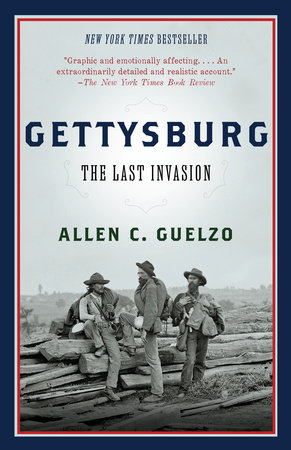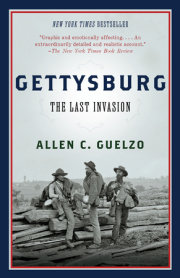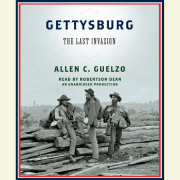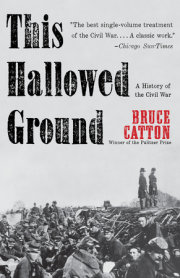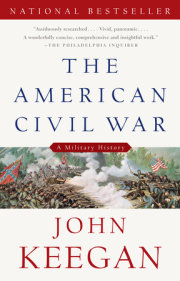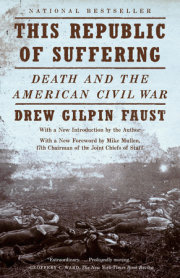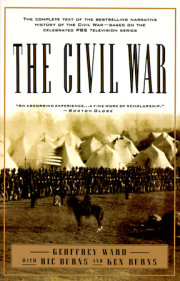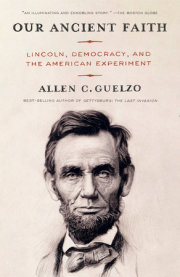In the two-and-a-half decades after the battle of Gettysburg, the Union veterans who survived to tell the tale were nearly unanimous in the declaration that the key to the battle depended on holding one very important hill. The puzzle for most modern students of the battle is why, with one consent, those veterans seemed to choose the wrong hill.
For the present generation of battlefield tourists, the most important hill on the battlefield is the cone-shaped moraine known as Little Round Top. Oddly, this was not the name by which it was known at the time of the battle. People referred to it variously as Wolf’s Hill, Sugar Loaf, or simply the “rocky hill,” and after the battle, John B. Bachelder (who set himself up almost at once as the official chronicler of Gettysburg) tried to fix the name “Weed’s Hill” to it, in honor of the most senior Union officer killed there during the battle, Stephen Weed. But Little Round Top it became, and Little Round Top it stayed, although even then it played a strictly back-seat role in the imaginations of the battle’s veterans. It was not until the 1890s when curiosity began to shift in Little Round Top’s direction, and not for another eighty years – after Michael Shaara’s The Killer Angels – that Little Round Top suddenly blossomed into the key to the entire battle. From that point, and up through the Ronald Maxwell movie epic, Gettysburg, Little Round Top was transformed into “the key of the field in front beyond a doubt,” and popular historians upped the ante to the point where “they saved the Union at Little Round Top.”
In particular, it has been Joshua Lawrence Chamberlain and the 20th Maine’s last-chance bayonet charge on Little Round Top on July 2nd which have taken most of the laurels for guaranteeing that salvation. Certainly, the stand of the 20th Maine makes for great drama in the midst of great drama. As the left-flank regiment of Col. Strong Vincent’s four-regiment brigade, Chamberlain’s 20th Maine held off at least two major rebel infantry attacks in their front that afternoon, and then, when their ammunition was virtually gone, fixed bayonets and charged downhill, surprising and scattering the rebels. It was a beau geste straight out of the story-books. The fact that Chamberlain had, only a year before, been an unheralded professor of rhetoric at Bowdon College made the charge all the more amazing: an amateur, in command of amateurs, somehow made not only the right call, but the most daring call that could have been made, and succeeded. Chamberlain’s story appealed to that deep streak of American self-reliance—that confidence in improvisation, that can-do spirit that trumps overly-intellectualized and hidebound European ways of doing things. That Chamberlain was a highly-intellectualized individual himself was beside the point.
It takes nothing away from the tenacity of the fighting – the last-minute arrivals, the desperate and sometimes hand-to-hand combat, the just-in-time swing and flow of the action – to say that the drama of Little Round Top has been allowed to run away with the reality. But looked at coldly, the real credit for defending Little Round Top belongs less to Chamberlain and the 20th Maine, and more to three others who have largely faded from attention: Gouverneur Warren, the Army of the Potomac’s chief engineer, who spotted rebel infantry swarming in the direction of the otherwise undefended hill and sent off gallopers to beg or borrow any troops they could find...Strong Vincent, who took his professional standing in his own hands, brought his brigade up to Little Round Top without authorization from his division commander, and organized its defense...and Patrick O’Rorke, who also bolted at Warren’s call and brought his 140th New York up and over the crest of Little Round Top just in time to shove an even more serious Confederate attack back down the slopes. Unhappily, O’Rorke was killed in the charge and Strong Vincent was shot through the groin and died after four days of suffering. Gouverneur Warren would outlive the battle, only to be pilloried for misconduct at Five Forks in 1865. That left Chamberlain as the best candidate for laurel-wearing. And he was not an unworthy candidate, either. He would survive three wounds in 1864 (one of them near-fatal), win the Congressional Medal of Honor, end the war as a major-general, serve four terms as governor of Maine and as president of Bowdoin. Even more important, he would publish at least seven accounts of Little Round Top, giving himself the starring role, and giving Little Round Top the starring role in the battle as the last extension of the Union Left flank.
Other veterans of Vincent’s brigade were not impressed: “Chamberlain,” complained Porter Farley of the 140th New York, “is a professional talker and I am told rather imaginative withal.” And the truth is that Chamberlain’s charge was only one of several such spoiling attacks that day, and Little Round Top was more of an outpost than the real flank of the Union line. It was the ex-professor’s considerable flair for self-promotion which vaulted him ahead of the others.
Nor is it entirely clear that Little Round Top quite deserved the role Chamberlain attached to it. The puffing of Joshua Chamberlain and the 20th Maine is a subset of the larger problem of glamorizing Little Round Top itself. Charles Hazlett, yet another forgotten player on the hill that day who manhandled his six 10-pounder Parrott rifles “by hand and handspike” up through the tangled trees and underbrush of the hill, warned Gouverneur Warren that Little Round Top didn’t afford much in the way of an artillery platform. The cone of the hill crested in a narrow spine which offered very little room for the deployment of artillery, and only permitted a line of fire facing west. Both Warren and Hazlett agreed that Little Round Top “was no place for efficient artillery fire—both of us knew that.” Hazlett only took the trouble to get up there because he hoped that “the sound of my guns will be encouraging to our troops and disheartening to the others.”
Defending Little Round Top may even have endangered more than it protected the Union position at Gettysburg. The great Confederate attack on July 2nd had never been designed to seize Little Round Top in the first place; the plan laid down by both Robert E. Lee and James Longstreet was to swing a gigantic, curling blow up the Emmitsburg Road into the rear of Cemetery Hill, and brush past the “rocky hill.” When Gouverneur Warren began pulling, first Vincent’s Brigade, then O’Rorke’s regiment, then the balance of Stephen Weed’s brigade, up to Little Round Top, he was actually subtracting units which were intended to reinforce the Union line along the Emmitsburg Road, and thus made it all the easier for James Longstreet’s rebels to land the real blow of the afternoon. The Confederates who scrambled up Little Round Top were only there because they had wandered off-course during the attack, and probably would have made no difference to the overall outcome of events on July 2nd – except, of course, that they induced Union commanders like Warren to siphon-off troops which could have been used to shore-up the Emmitsburg Road. As it was, the thinly-spread Union troops along the Emmitsburg Road were crushed by Longstreet’s sledgehammer, and the Army of the Potomac was nearly brought to its knees. Had Longstreet succeeded in seizing Cemetery Hill, we would today be blaming, rather than celebrating, Warren, Chamberlain and O’Rorke for allowing themselves to be distracted by a useless piece of rocky real estate.
Because, in the end, it really was Cemetery Hill, not Little Round Top, which was the key, something the veterans of the battle attested to in the years after the war by making their pilgrimages to Cemetery Hill, not Little Round Top. Unlike the narrow spine of Little Round Top, Cemetery Hill was a broad, flat plateau, with the ideal elevation for the siting of artillery (which was, normally, 1% of the distance to the target and never greater than 7% of the distance) and plenty of back-space to accommodate limber chests, caissons, horse-teams and battery wagons. And although modern visitors to Cemetery Hill can get no idea of this because of the foliage that has grown up there since 1863, a four-negative panorama taken from Cemetery Hill in 1869 by the local Gettysburg photographers William Tipton and Robert Myers shows a dramatically uncluttered viewshed to the west, north and south. Cemetery Hill, in other words, constituted an artillerists’ dream. It was enough “to make an artilleryman grow enthusiastic,” wrote one Pennsylvania officer. “This high ground which dominated the town and the fields in all directions, save one” (to the east) gave to an artillerists’ eye “an unobstructed view of the rolling country open and accessible to the fire of our guns.” Even Confederate observers admitted that Cemetery Hill was “made, one might say, for artillery.”
So long as the Army of the Potomac held Cemetery Hill, it had a position from which its massed artillery could decimate any infantry Robert E. Lee attempted to throw at it – in fact, did decimate it during Pickett’s Charge on July 3rd. And so long as it held Cemetery Hill, it also gripped the Baltimore Pike, the principal life-line to its railhead and supply base in Maryland. Losing Little Round Top would not have won the battle for Lee, or lost it for the Union. Cemetery Hill would have, though, which is why, after the battle, the Soldiers’ National Cemetery was created on Cemetery Hill, why the first battlefield observation tower was built on Cemetery Hill, and why the first veterans’ encampments were held on Cemetery Hill. It would take another generation to forget Cemetery Hill’s importance, and the combination of a very gifted self-advertiser and a very gifted novelist to replace it with “the rocky hill.”
Copyright © 2013 by Allen C. Guelzo. All rights reserved. No part of this excerpt may be reproduced or reprinted without permission in writing from the publisher.

